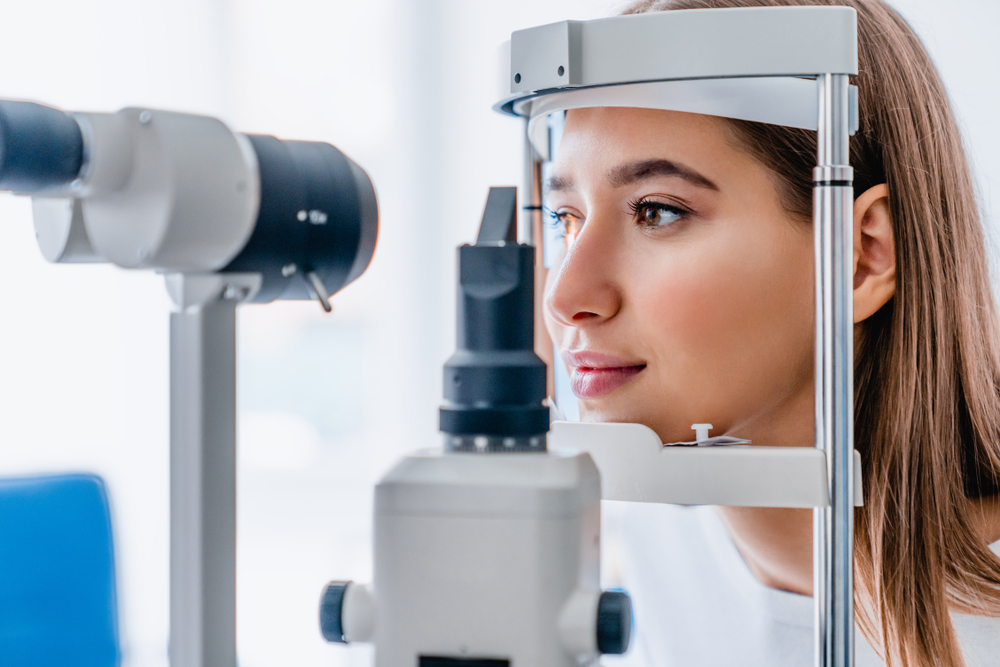Are you considering PRK to improve your vision and reduce your reliance on glasses and contacts? Learning about what happens during the procedure and what the healing process will be like can help you feel more confident and relaxed about undergoing vision correction surgery.
Keep reading to learn more about what to expect during and after your PRK procedure.
What is PRK?

Photorefractive keratectomy, or PRK, is a laser eye surgery that corrects refractive errors, including astigmatism, nearsightedness, and farsightedness. The procedure can significantly reduce or even eliminate your need for glasses or contact lenses.
A refractive error happens when your cornea, or the clear front layer of the eye, doesn’t refract incoming light properly. As a result, light can’t focus precisely on the retina, the part of the eye that sends visual images to the brain, leading to blurred vision.
PRK modifies the shape of your cornea to fix your refractive errors. Post-PRK, incoming light bends accurately and lands sharply on the retina, allowing you to see clearly without requiring visual aids for most or all activities.
PRK is often recommended as a LASIK alternative for patients with thin corneas or severe dry eye, as well as patients who participate in contact sports. While PRK also has similar visual outcomes to LASIK, it has different candidacy requirements, procedural steps, and recovery times.
How Can You Prepare for PRK?

You’ll first have a consultation with your PRK surgeon to evaluate your candidacy for the procedure. They’ll ask about your health history and perform a thorough eye examination to check your vision and overall eye health.
You’ll also undergo a series of tests, including pupil measurement, corneal measurement (pachymetry), corneal topography, visual acuity testing, refracting testing, and screenings for eye conditions like cataracts and glaucoma. Additionally, you’ll discuss what you should expect during and after your procedure and get an opportunity to ask questions.
Let your PRK surgeon know of any medications you frequently use, both prescription and over-the-counter. You may have to stop taking them temporarily.
If you wear contact lenses, you’ll be asked to stop for a certain period before your assessment and procedure.
What Should You Expect During Your PRK Procedure?
Your PRK surgeon will start by applying numbing eye drops to ensure you’re comfortable throughout the procedure. You may also be given a mild sedative to help you feel at ease.
Your PRK surgeon will then put an eyelid holder on your eye so you don’t blink. Next, they will completely remove the outermost layer of your cornea, known as the epithelium.
After that, your PRK surgeon will use a programmed excimer laser to reshape the underlying corneal tissue called the stroma. Reshaping your cornea involves removing microscopic amounts of corneal tissue to correct your refractive errors.
Once done, your PRK surgeon will place a clear contact lens bandage on your eye to protect it as the epithelium regrows. PRK is performed on both eyes on the same day and takes about 10 minutes per eye.
What Should You Expect After Your PRK Procedure?
You’ll be taken to the recovery area after your PRK procedure before being discharged the same day. You won’t be able to drive post-surgery, so arrange ahead of time for a family member or friend to take you home.
Post-Operative Instructions
Before leaving, your PRK surgeon will provide detailed post-operative instructions. Follow the instructions diligently for a smoother recovery and optimal results.
They will also prescribe anti-inflammatory and antibiotic eye drops. Be sure to apply the eye drops as directed to control inflammation and prevent infection.
You’ll wear sunglasses outside for as long as your PRK surgeon instructs. The sunglasses will prevent sun exposure, which can cause corneal scarring and vision problems post-op.
Prioritizing Rest

Plan to take a nap or relax once you get home. You may have mild eye pain for 2 to 3 days, which can be managed with over-the-counter pain medications.
You may also experience light sensitivity and blurriness following PRK. As your eyes heal, these symptoms will gradually improve over the next three to five days.
You’ll need to avoid strenuous activities as they could interfere with the healing process. Additionally, don’t swim for at least 2 weeks, and avoid getting soap or water into your eyes.
Follow-Up Visits
You’ll be scheduled for follow-up visits with your PRK surgeon. At these appointments, they’ll assess how your eyes are healing and let you know when it’s safe to return to things like working and driving.
While your vision will likely be clearer within a few days, it can take anywhere from 6 weeks to 6 months to see your best. Then, you can enjoy crystal-clear vision for decades and break free from the hassles of visual aids.
Getting PRK at Herschel LASIK and Cataract Institute could be your ticket to lasting visual freedom. Our experienced and highly skilled PRK surgeon has helped patients achieve their dreams of living freely without glasses or contacts getting in the way.
Are you interested in PRK? Schedule your appointment at Herschel LASIK and Cataract Institute in Orlando, FL, today to discover if you’re a good candidate for the procedure!




